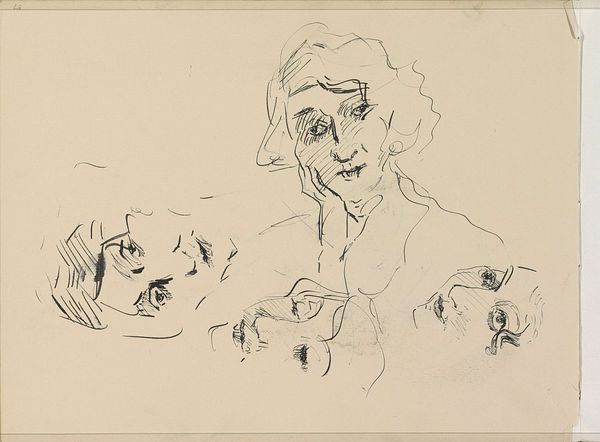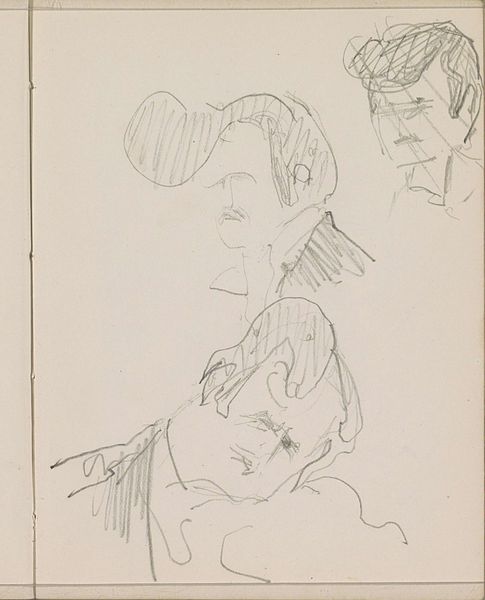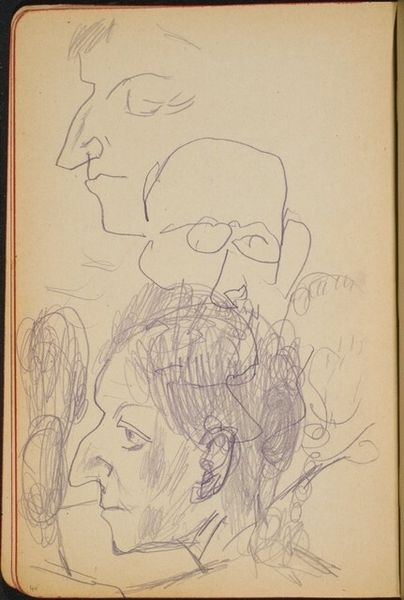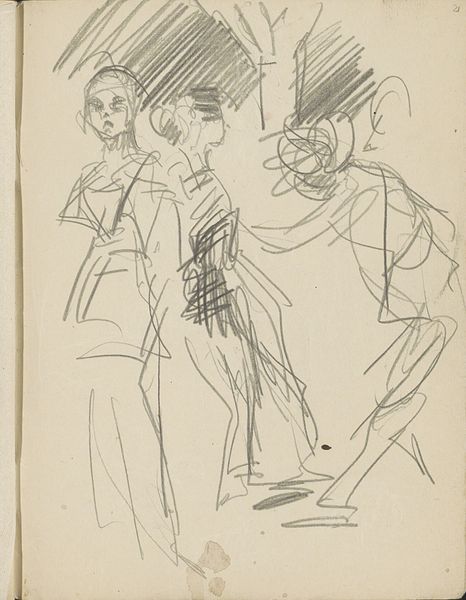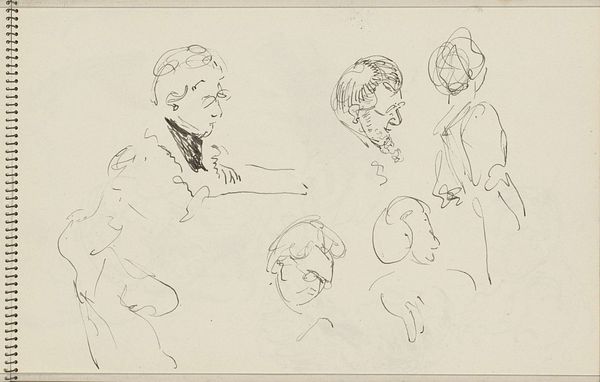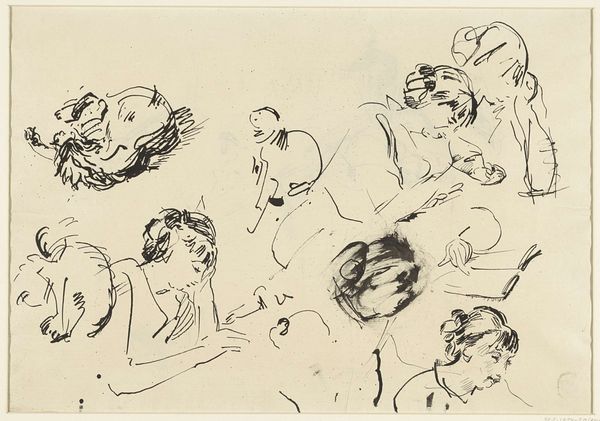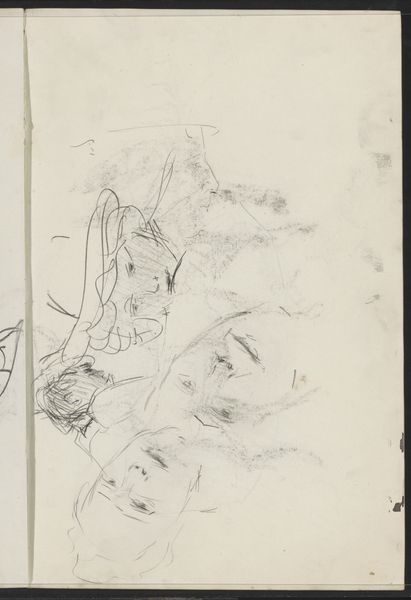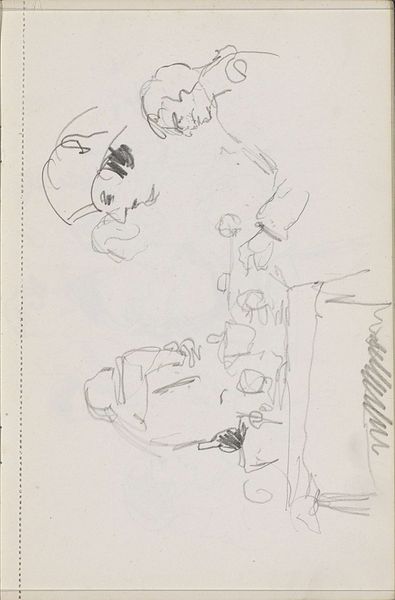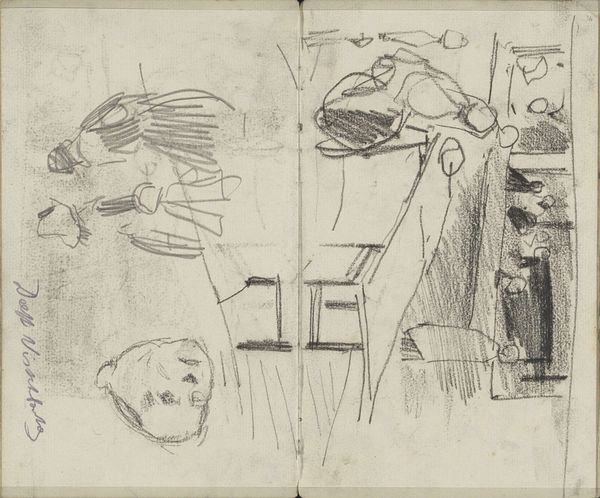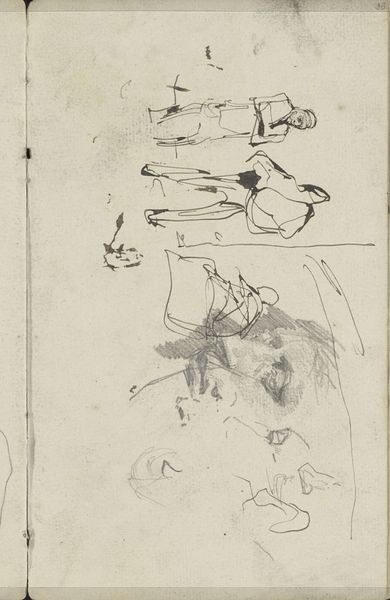
Frauenkopf, ein Geiger, zwei Bassisten (Drei verschiedene Skizzen auf einem durch Faltung in vier Felder unterteilten Papierbogen) 1920
0:00
0:00
drawing, paper, pencil
#
drawing
#
figuration
#
paper
#
pencil
#
expressionism
Copyright: Public Domain
Curator: This sketch, titled "Frauenkopf, ein Geiger, zwei Bassisten (Drei verschiedene Skizzen auf einem durch Faltung in vier Felder unterteilten Papierbogen)" which translates to "Woman's Head, a Violinist, Two Bassists (Three different Sketches on a sheet of Paper divided into four Sections by Folding)", was created in 1920 by Max Beckmann. He used pencil on paper for it, and you can view it right here at the Städel Museum. What are your first thoughts? Editor: My immediate reaction is a sense of fragmented narrative. It's a visual puzzle. The crude lines, the exaggerated features, everything speaks to the turmoil of expressionism, even within these seemingly disparate sketches. Curator: Indeed. The paper itself is quite interesting; it’s divided into quadrants through folding, each presenting a different subject: a woman's head, a violinist, and two bassists. This division seems almost like a commentary on the splintered reality of post-World War I Germany, doesn't it? Editor: Absolutely. Think about the context: The Great War had just ended, leaving deep scars on German society. Expressionism, as an artistic movement, channeled that sense of societal fracture, and Beckmann uses these jagged lines and grotesque figures to mirror that. The figures almost feel like caricatures, stripped of dignity. Curator: The prominence of musical figures also cannot be dismissed. The role of art was hotly debated during this period. Beckmann seems to be responding to a search for order after such disorder, a search for harmony—even if he represents it here as highly imperfect, even disturbing. The positioning within quadrants does add to that impression. Editor: Yes, this idea of music as a search for meaning and purpose seems pertinent. Music, the artist, and even the female head— perhaps representative of cultural institutions or ideals themselves are almost suspended in a kind of purgatory or uncertainty. Do these creative outputs really hold any worth, following total catastrophe? Curator: That's an interesting consideration! Now that you mention that, this work now takes on a totally different light. This simple sketch compels viewers to contend with that turmoil through these faces staring back at them, right here in our own collection. Editor: Exactly, that direct gaze from some figures within such apparent chaos gives a great focus for contemplating everything further. Curator: It's an exceptional display of line and space at work, capturing such complicated issues. Editor: Agreed. It shows us that even sketches can reveal complex historical trauma.
Comments
No comments
Be the first to comment and join the conversation on the ultimate creative platform.
